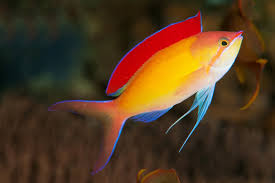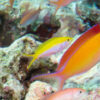The Depiction of Dragons in Traditional Clothing Art Forms: A Cultural Exploration

Throughout history, the dragon has been a symbol of power, auspiciousness, and divine protection across various cultures. Its image appears not only in mythology, folklore, and literature but also plays a significant role in traditional art forms. In many Asian cultures, particularly in China, Korea, and Japan, the dragon is intricately woven into the fabric of traditional clothing, where it serves as a symbol of strength, good fortune, and prosperity. The depiction of dragons in clothing reflects the cultural reverence for this mythical creature, with its intricate patterns, symbolism, and artistic interpretations passed down through generations.
In this article, we will explore the different forms of art that represent the dragon in traditional clothing, focusing on their significance, artistic techniques, and cultural symbolism in various regions. We will delve into the ways in which the dragon is used to convey power, status, and spiritual beliefs, as well as how it has influenced the design of traditional garments and textile art throughout history.
The Dragon in Chinese Traditional Clothing
In Chinese culture, the dragon is one of the most important and revered symbols. It is often associated with the emperor, imperial power, and cosmic harmony. The Chinese dragon is a hybrid creature, a symbol of strength and benevolence, with the ability to control the elements such as rain, wind, and water. Its image is used in numerous art forms, including paintings, sculptures, and most notably in traditional clothing.
The Dragon Robes of Imperial China
One of the most iconic examples of the dragon in traditional Chinese clothing is the dragon robe, also known as longpao (龙袍). These robes were worn by emperors and high-ranking officials during the Qing Dynasty (1644–1912) and were richly adorned with dragon motifs to signify the wearer’s power and divine right to rule. The dragon was typically embroidered or woven into the fabric of the robe, often using silk or brocade.
The dragon robe was not only a garment but also a reflection of the emperor’s connection to the heavens. The dragon, traditionally depicted with five claws, symbolized imperial authority, and the number of claws was crucial in determining the robe’s status. Emperors were depicted with five-clawed dragons, while officials and lower-ranking members of society wore robes with dragons having fewer claws (e.g., three or four claws).
The robe’s design was intricate, and the dragon was often positioned in a dynamic, almost playful pose, signifying vitality and strength. The robe also included symbolic elements such as the flame, representing the dragon’s fiery energy, and the clouds, symbolizing the connection between the earthly and the celestial.
In addition to being a symbol of the emperor’s authority, the dragon robe also had specific ritualistic and spiritual connotations. It was believed that wearing a dragon-embroidered robe allowed the wearer to channel the dragon’s protective and auspicious energy. The robes were meticulously designed to align with the cosmic principles of Chinese cosmology, ensuring the wearer’s connection to the heavens and the proper balance of energies.
Embroidered Dragon Patterns in Chinese Wedding Attire
Dragons also appear in traditional Chinese wedding attire, symbolizing happiness, fertility, and good fortune for the bride and groom. The bride’s wedding gown often features embroidered dragon patterns, particularly the dragon and phoenix motif, which represents the balance of opposites and the unity of the couple. The dragon symbolizes the groom, while the phoenix represents the bride, and together they are believed to ensure harmony and prosperity in the marriage.
The dragon embroidery on the gown is often accompanied by intricate motifs of peonies, lotus flowers, and clouds, all of which contribute to a sense of auspiciousness. These garments are usually made of red silk or satin, a color symbolizing good luck and joy in Chinese culture.
The Dragon in Korean Traditional Clothing
In Korea, dragons are also significant symbols of strength, royal power, and divine protection, and their representation in traditional clothing is no less important than in China. The hanbok, the traditional Korean garment, often features embroidered dragons, particularly in the jeogori (the top jacket) worn by kings and high-ranking officials.
The Korean Dragon in Royal Attire
The royal robes of the Joseon Dynasty (1392–1897) were adorned with dragons to indicate the wearer’s royal status and connection to the divine. These robes, known as hwalot, were worn by the king and were lavishly embroidered with dragons and other symbolic motifs. The dragon, similar to its Chinese counterpart, was a representation of imperial power and cosmic balance.
The embroidery of the dragon on Korean royal robes was often done with gold thread, showcasing both the wealth and the divine protection granted to the king. The dragon in Korean robes was usually depicted in a more serene and majestic manner than in Chinese depictions, reflecting the Confucian ideals of wisdom and benevolence that influenced the Korean court.
Dragons in Korean Ceremonial Clothing
Dragons also appear in other forms of ceremonial Korean clothing, particularly in the attire worn during weddings and ancestral rites. The hanbok worn by the groom in a traditional Korean wedding often features a dragon motif as a symbol of strength, protection, and the union of the couple. Similarly, ceremonial robes used in ancestral rites are embroidered with dragons to invoke the presence of divine ancestors and to ensure the proper performance of the rituals.
The Dragon in Japanese Traditional Clothing
In Japan, the dragon, or ryu (竜), is a symbol of power, wisdom, and good fortune. Japanese dragons are often associated with water and the rain, and they are frequently depicted as guardians of rivers and seas. In traditional Japanese clothing, dragons appear in various forms, particularly in kimono designs.
The Dragon in Japanese Kimono
The kimono, a traditional Japanese garment, often features dragon motifs, particularly in formal wear and ceremonial kimonos. The dragon in kimono designs is typically depicted as a long, serpentine creature with a fierce expression, and it is often surrounded by clouds and waves, symbolizing the dragon’s control over the natural elements. The dragon motif is often used in combination with other symbols such as the phoenix, cranes, and chrysanthemums, representing harmony, longevity, and prosperity.
In sumo wrestling and martial arts, the dragon is often seen in performance attire, where the embroidered dragon on the gi (martial arts uniform) signifies the athlete’s strength, determination, and connection to the divine energy of the dragon. The dragon is believed to provide the wrestler with the energy to defeat his opponent and achieve victory.
The Dragon in Japanese Festival Clothing
In Japanese festivals, particularly those celebrating the new year or victory, dragon motifs are commonly featured in festival clothing and parade costumes. The dragon is often worn as a large dragon mask or costume, particularly in traditional performances such as the dragon dance, where the dragon is believed to bring good luck, dispel evil spirits, and usher in a prosperous year.
The Dragon in Southeast Asian Traditional Clothing
Dragons also appear in the traditional clothing of other parts of Asia, particularly in Southeast Asia, where the image of the dragon is associated with water, fertility, and royalty.
Vietnamese Ao Dai
In Vietnam, the ao dai, a traditional outfit worn by both men and women, often incorporates dragon motifs, particularly for formal or ceremonial occasions. The dragon in Vietnamese art is a symbol of prosperity, fertility, and protection, and its image is often embroidered onto the silk fabric of the ao dai. The dragon in Vietnamese culture is seen as a benevolent creature that brings peace and abundance, often associated with royal families and imperial dynasties.
Conclusion
The dragon, as a symbol of strength, power, and divine protection, has made its mark on traditional clothing across Asia. From the dragon robes of imperial China to the kimono in Japan and the hwalot in Korea, the depiction of dragons on clothing serves not only as a reflection of the wearer’s status but also as an invocation of the natural forces and divine powers that govern the universe.
Throughout these cultures, the dragon represents a harmonious connection between the earthly and celestial realms. Its depiction in clothing is a testament to its symbolic importance and its enduring presence in the cultural consciousness of Asia. The intricate dragon designs on traditional clothing continue to captivate and inspire, symbolizing both the mystique and the profound cultural heritage of the societies that revere this mythical creature.


